
The artists proposed here pose their work from a narrative perspective capable of producing open discourses, through the construction of stories that establish a visual and emotional dialogue with the viewer. The works emphasize the experiences of their daily lives, documenting contemporary reality from a subjective perspective, providing a personal reflection on their environment. Through their work, the artists expose a look that questions this world that is increasingly agitated and in permanent transformation.
Galeria El Museo opened in 1987 in Bogotá, Colombia as a project aimed to develop and promote the Colombian art market locally and internationally, through representing artists, collaborations with other galleries, museum exhibitions and participation in international art fairs. Galeria El Museo’s represented artists are periodically selected based on their contributions to the development of the visual arts. In 2001 Galeria El Museo opened Galeria Fernando Pradilla in Madrid to build a bridge between the Latin American, Spanish, and European art scenes. Galeria El Museo has represented throughout its history major international artist such as Fernando Botero, Alejandro Obregón, Débora Arango, Luis Caballero, Carlos Rojas, Nadin Ospina and many others.
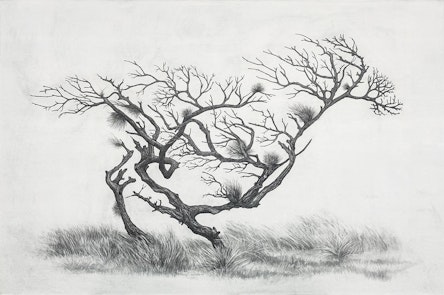
Hybridity is inherent to any of my works, and my images always tend to be a mixture of different natures. The image is more than a mere compilation of sensitive appearances, the image is above all a certain point of view, where emotions and thoughts are not contained in the objects of reality but are determined by my relationship with them. This makes the craft to play a fundamental role, since my gesture in the drawing is the direct manifestation of my emotions and thoughts. The real and the imaginary intersect in the work, turning the representation into a phenomenon where emotions and ideas are embodied, instead of a mere capture of sensory appearances. In my most recent explorations, the coexistence between the natural and the human is a theme that has been taking shape. I have always believed that nature is partially inaccessible to us. Somehow, human history begins when men distinguished themselves from animals and the links with some essential aspects of nature were broken. I am particularly interested in how humankind seeks through poetry to relate to his environment via exercises of representation and interpretation of the world, reinventing and defining through art everything he sees.
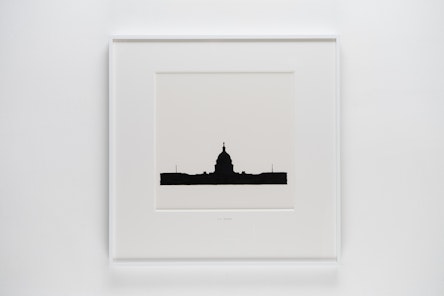
In his current work, Monsalve proposes a reflection on the exploration and transformation of the landscape in which he uses reality and fiction as a strategy; science and nature as a method, and ecology and politics as a space for discussion. Oil, coal, gold, silver and copper are mineral and organic materials taken from the earth that in their plastic form have been conceived by Monsalve as abstractions of the landscape where matter and its significance take on even more relevance and are associated with local and global problems, as a way of denouncing the ecological disasters caused by illegal mining and the exploitation of natural resources.

Cruz Novillo is one of the Spanish artists who, starting in the 1970s, undertook the renewal of geometric visual language in Spain. His work is influenced by mathematical, musical, geometric parameters and various color theories. In the 1990s, he developed the plastic concept “Diaphragm”, a name that encompasses a multitude of works whose common characteristic is the combination of a variable number of monochrome, sound, photographic or three-dimensional elements. In his work, geometric abstraction and figuration coexist in a natural way since both come from the patterns marked by the combination of musical notes, numbers and colors. Cruz Novillo is an Academician of the Royal Academy of Fine Arts of San Fernando. He won the National Design Award in 1997; National Prize for Painting Community of Castilla La Mancha, 2002; Medal of Merit for Fine Arts 2012. In 1977 he represented Spain at the Sao Paulo International Biennial, Brazil. His work is represented in national and international private and public collections such as the Reina Sofía National Art Center Museum (MNCARS); Patio Herreriano Museum of Valladolid, Spain; Juan March Foundation, Madrid, Spain; Accenture Collection, Madrid.

Cruz Novillo is one of the Spanish artists who, starting in the 1970s, undertook the renewal of geometric visual language in Spain. His work is influenced by mathematical, musical, geometric parameters and various color theories. In the 1990s, he developed the plastic concept “Diaphragm”, a name that encompasses a multitude of works whose common characteristic is the combination of a variable number of monochrome, sound, photographic or three-dimensional elements. In his work, geometric abstraction and figuration coexist in a natural way since both come from the patterns marked by the combination of musical notes, numbers and colors. Cruz Novillo is an Academician of the Royal Academy of Fine Arts of San Fernando. He won the National Design Award in 1997; National Prize for Painting Community of Castilla La Mancha, 2002; Medal of Merit for Fine Arts 2012. In 1977 he represented Spain at the Sao Paulo International Biennial, Brazil. His work is represented in national and international private and public collections such as the Reina Sofía National Art Center Museum (MNCARS); Patio Herreriano Museum of Valladolid, Spain; Juan March Foundation, Madrid, Spain; Accenture Collection, Madrid.
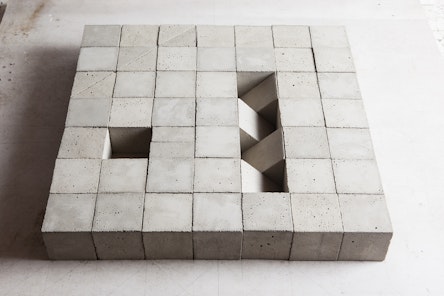
Sebastián Dávila's work reflects on the human condition through working with space, scale and the suggestion of absurd narratives. Useless architectural spaces, generated from found objects, are composed to inhabit the uninhabitable and transform into a place what was already considered waste. In both Dávila's photography and sculpture, negative space is the main component that governs a rigorous geometric composition. This mania for defining the limits of the void generates a work of punctual and ordered elements where what predominates is silence. Concrete is the main material with which the sculptures are developed, it accentuates the architectural language of the work, its plasticity allows a gesture that is close to engraving and, due to its nature of imperfect finishes, it complements the antiquity and memory of found objects. The sculptures use undeniably utilitarian architectural codes such as the door or the staircase, but these are often stripped of their functionality. The staircase, door or even the space, being useless, acquires an emotional character that can be full of frustration and anguish or humor and incoherence. These scenes, ideal for the loneliness of the individual who thinks about what he does not understand, wait for something to happen. This is how the viewer becomes the absent character, sitting on the chair, inhabiting the space and reciting his monologue. They are spaces to think out loud. Places with a lot of silence. A geometric game based on defining the limits of the void. Constructions that generate a visual contradiction, which force the dimensioning of the same distance as large and small at the same time.

Sebastián Dávila's work reflects on the human condition through working with space, scale and the suggestion of absurd narratives. Useless architectural spaces, generated from found objects, are composed to inhabit the uninhabitable and transform into a place what was already considered waste. In both Dávila's photography and sculpture, negative space is the main component that governs a rigorous geometric composition. This mania for defining the limits of the void generates a work of punctual and ordered elements where what predominates is silence. Concrete is the main material with which the sculptures are developed, it accentuates the architectural language of the work, its plasticity allows a gesture that is close to engraving and, due to its nature of imperfect finishes, it complements the antiquity and memory of found objects. The sculptures use undeniably utilitarian architectural codes such as the door or the staircase, but these are often stripped of their functionality. The staircase, door or even the space, being useless, acquires an emotional character that can be full of frustration and anguish or humor and incoherence. These scenes, ideal for the loneliness of the individual who thinks about what he does not understand, wait for something to happen. This is how the viewer becomes the absent character, sitting on the chair, inhabiting the space and reciting his monologue. They are spaces to think out loud. Places with a lot of silence. A geometric game based on defining the limits of the void. Constructions that generate a visual contradiction, which force the dimensioning of the same distance as large and small at the same time.
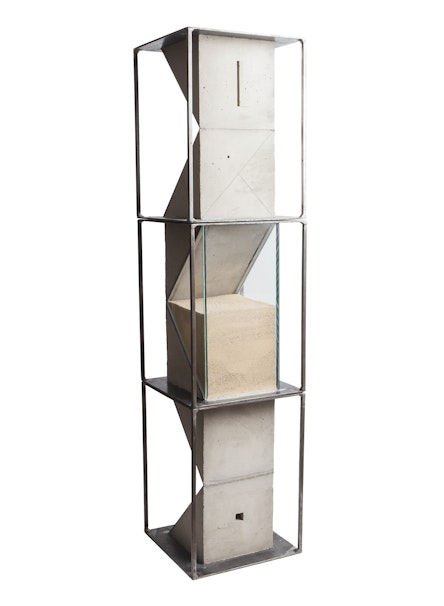
Sebastián Dávila's work reflects on the human condition through working with space, scale and the suggestion of absurd narratives. Useless architectural spaces, generated from found objects, are composed to inhabit the uninhabitable and transform into a place what was already considered waste. In both Dávila's photography and sculpture, negative space is the main component that governs a rigorous geometric composition. This mania for defining the limits of the void generates a work of punctual and ordered elements where what predominates is silence. Concrete is the main material with which the sculptures are developed, it accentuates the architectural language of the work, its plasticity allows a gesture that is close to engraving and, due to its nature of imperfect finishes, it complements the antiquity and memory of found objects. The sculptures use undeniably utilitarian architectural codes such as the door or the staircase, but these are often stripped of their functionality. The staircase, door or even the space, being useless, acquires an emotional character that can be full of frustration and anguish or humor and incoherence. These scenes, ideal for the loneliness of the individual who thinks about what he does not understand, wait for something to happen. This is how the viewer becomes the absent character, sitting on the chair, inhabiting the space and reciting his monologue. They are spaces to think out loud. Places with a lot of silence. A geometric game based on defining the limits of the void. Constructions that generate a visual contradiction, which force the dimensioning of the same distance as large and small at the same time.
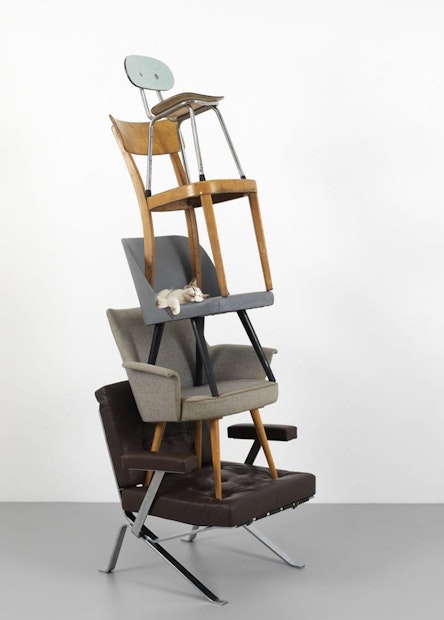
Marco Mojica's work is the result of a particular experience with collage; of that juxtaposition of images (and meanings) capable of generating a disturbing and ironic tension in its reading. The qualities of this medium, in which representations are contextualized, allow him to create sketches of future works. The artist thus becomes a consumer of images, creating a kind of personal archive of all visual records with potential for the execution of future works. Sources range from variety and art magazines, illustrated books, catalogs for engineers, Internet archives, videos and even photocopies, becoming previous sketches of his works. In this sense, appropriation, understood as a plastic strategy, becomes an effective tool that allows him to address such pertinent issues within contemporary art as the concept of originality.

Marco Mojica's work is the result of a particular experience with collage; of that juxtaposition of images (and meanings) capable of generating a disturbing and ironic tension in its reading. The qualities of this medium, in which representations are contextualized, allow him to create sketches of future works. The artist thus becomes a consumer of images, creating a kind of personal archive of all visual records with potential for the execution of future works. Sources range from variety and art magazines, illustrated books, catalogs for engineers, Internet archives, videos and even photocopies, becoming previous sketches of his works. In this sense, appropriation, understood as a plastic strategy, becomes an effective tool that allows him to address such pertinent issues within contemporary art as the concept of originality.

Marco Mojica's work is the result of a particular experience with collage; of that juxtaposition of images (and meanings) capable of generating a disturbing and ironic tension in its reading. The qualities of this medium, in which representations are contextualized, allow him to create sketches of future works. The artist thus becomes a consumer of images, creating a kind of personal archive of all visual records with potential for the execution of future works. Sources range from variety and art magazines, illustrated books, catalogs for engineers, Internet archives, videos and even photocopies, becoming previous sketches of his works. In this sense, appropriation, understood as a plastic strategy, becomes an effective tool that allows him to address such pertinent issues within contemporary art as the concept of originality.
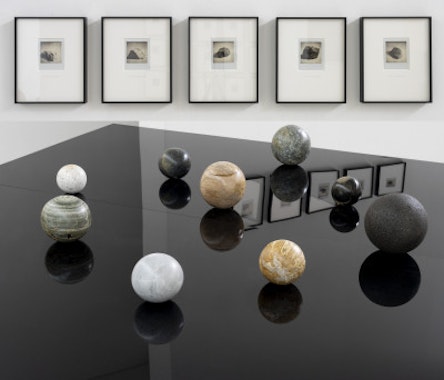
In his current work, Monsalve proposes a reflection on the exploration and transformation of the landscape in which he uses reality and fiction as a strategy; science and nature as a method, and ecology and politics as a space for discussion. Oil, coal, gold, silver and copper are mineral and organic materials taken from the earth that in their plastic form have been conceived by Monsalve as abstractions of the landscape where matter and its significance take on even more relevance and are associated with local and global problems, as a way of denouncing the ecological disasters caused by illegal mining and the exploitation of natural resources.
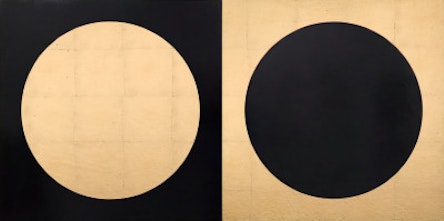
In his current work, Monsalve proposes a reflection on the exploration and transformation of the landscape in which he uses reality and fiction as a strategy; science and nature as a method, and ecology and politics as a space for discussion. Oil, coal, gold, silver and copper are mineral and organic materials taken from the earth that in their plastic form have been conceived by Monsalve as abstractions of the landscape where matter and its significance take on even more relevance and are associated with local and global problems, as a way of denouncing the ecological disasters caused by illegal mining and the exploitation of natural resources.
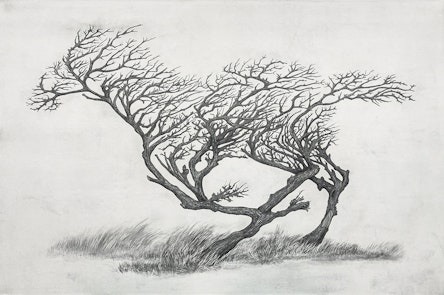
Hybridity is inherent to any of my works, and my images always tend to be a mixture of different natures. The image is more than a mere compilation of sensitive appearances, the image is above all a certain point of view, where emotions and thoughts are not contained in the objects of reality but are determined by my relationship with them. This makes the craft to play a fundamental role, since my gesture in the drawing is the direct manifestation of my emotions and thoughts. The real and the imaginary intersect in the work, turning the representation into a phenomenon where emotions and ideas are embodied, instead of a mere capture of sensory appearances. In my most recent explorations, the coexistence between the natural and the human is a theme that has been taking shape. I have always believed that nature is partially inaccessible to us. Somehow, human history begins when men distinguished themselves from animals and the links with some essential aspects of nature were broken. I am particularly interested in how humankind seeks through poetry to relate to his environment via exercises of representation and interpretation of the world, reinventing and defining through art everything he sees.

Gonzalo Fuenmayor reflects in his work his double cultural influence: Hispanic and North American. His work questions the Caribbean identity as a brand and the stereotypes that this concept has generated through images that have become local symbols such as a palm tree or a banana tree. Opposed to the exercise of drawing, Fuenmayor works from the process of erasing the charcoal stain to abstract the figure. In his works, the artist seeks to combine a narrative line where the decorative and the tragic come together in a discourse that borrows resources from literature, cinema and advertising.

Gonzalo Fuenmayor reflects in his work his double cultural influence: Hispanic and North American. His work questions the Caribbean identity as a brand and the stereotypes that this concept has generated through images that have become local symbols such as a palm tree or a banana tree. Opposed to the exercise of drawing, Fuenmayor works from the process of erasing the charcoal stain to abstract the figure. In his works, the artist seeks to combine a narrative line where the decorative and the tragic come together in a discourse that borrows resources from literature, cinema and advertising.
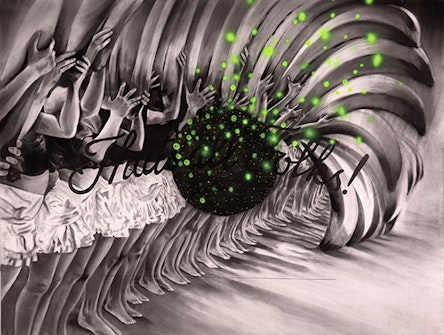
Gonzalo Fuenmayor reflects in his work his double cultural influence: Hispanic and North American. His work questions the Caribbean identity as a brand and the stereotypes that this concept has generated through images that have become local symbols such as a palm tree or a banana tree. Opposed to the exercise of drawing, Fuenmayor works from the process of erasing the charcoal stain to abstract the figure. In his works, the artist seeks to combine a narrative line where the decorative and the tragic come together in a discourse that borrows resources from literature, cinema and advertising.
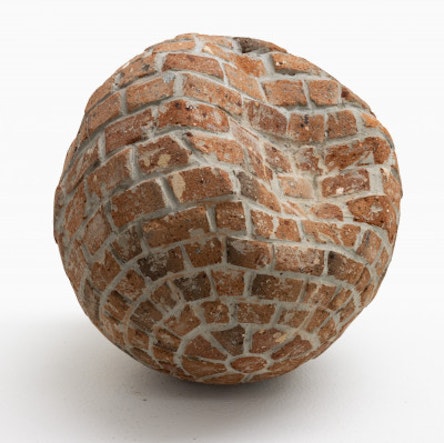
Fredy Alzate reflects on unbridled urbanism and threatened nature through strategies that review spontaneous architecture in Latin American cities, the recursiveness of contingent situations and the emergence of habitation. It attends to different significant dimensions of territory, mobilizing signs that he takes from the landscape transformed by human action, to problematize representation systems and disturb imaginaries about notions of variegation and emptiness, stability and vertigo, density and hollowness, formality and informality, center and margins, with which he configures dystopian gestures that refer to specific geographical or political contexts. In some three-dimensional processes he uses second-hand materials, abject objects, or simulacra of materials, to express urban phenomena or power structures in our context, exploring the relationship between history, politics and the configuration of our own subjectivities. The dynamics of a house of cards in his series Ensayos en el vacio (Essays in the void) refers to self-construction processes in the Latin American city. The evident precarious balance exposed by this assembly made by accumulation, indicates the states of contingency that can be sensed in the outskirts of the city. In Geografía Interior (Interior Geography), Fredy Alzate transfers references to the landscape intervened by man through mining, to review geometries that expose surfaces which imitate rocky walls, of an organic nature, as opposed to reflective metallic surfaces, promoting games that result in questioning the genesis of matter and the world.
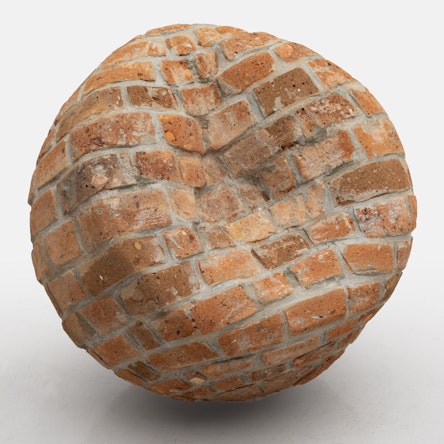
Fredy Alzate reflects on unbridled urbanism and threatened nature through strategies that review spontaneous architecture in Latin American cities, the recursiveness of contingent situations and the emergence of habitation. It attends to different significant dimensions of territory, mobilizing signs that he takes from the landscape transformed by human action, to problematize representation systems and disturb imaginaries about notions of variegation and emptiness, stability and vertigo, density and hollowness, formality and informality, center and margins, with which he configures dystopian gestures that refer to specific geographical or political contexts. In some three-dimensional processes he uses second-hand materials, abject objects, or simulacra of materials, to express urban phenomena or power structures in our context, exploring the relationship between history, politics and the configuration of our own subjectivities. The dynamics of a house of cards in his series Ensayos en el vacio (Essays in the void) refers to self-construction processes in the Latin American city. The evident precarious balance exposed by this assembly made by accumulation, indicates the states of contingency that can be sensed in the outskirts of the city. In Geografía Interior (Interior Geography), Fredy Alzate transfers references to the landscape intervened by man through mining, to review geometries that expose surfaces which imitate rocky walls, of an organic nature, as opposed to reflective metallic surfaces, promoting games that result in questioning the genesis of matter and the world.
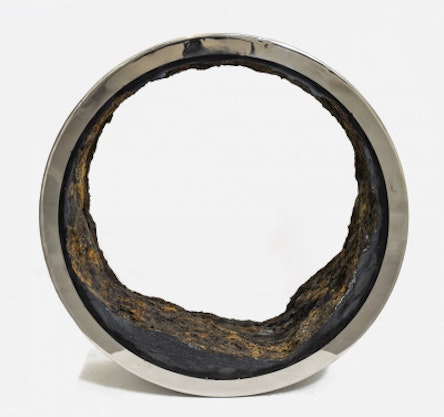
Fredy Alzate reflects on unbridled urbanism and threatened nature through strategies that review spontaneous architecture in Latin American cities, the recursiveness of contingent situations and the emergence of habitation. It attends to different significant dimensions of territory, mobilizing signs that he takes from the landscape transformed by human action, to problematize representation systems and disturb imaginaries about notions of variegation and emptiness, stability and vertigo, density and hollowness, formality and informality, center and margins, with which he configures dystopian gestures that refer to specific geographical or political contexts. In some three-dimensional processes he uses second-hand materials, abject objects, or simulacra of materials, to express urban phenomena or power structures in our context, exploring the relationship between history, politics and the configuration of our own subjectivities. The dynamics of a house of cards in his series Ensayos en el vacio (Essays in the void) refers to self-construction processes in the Latin American city. The evident precarious balance exposed by this assembly made by accumulation, indicates the states of contingency that can be sensed in the outskirts of the city. In Geografía Interior (Interior Geography), Fredy Alzate transfers references to the landscape intervened by man through mining, to review geometries that expose surfaces which imitate rocky walls, of an organic nature, as opposed to reflective metallic surfaces, promoting games that result in questioning the genesis of matter and the world.
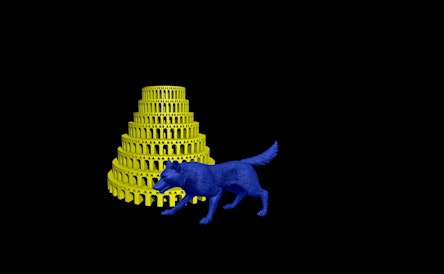
Nadín Ospina's work addresses the detection and reaffirmation of cultural fusions and interactions, the allegorical representation of symbolic encounters as a metaphor for contemporary historical events, humor as a tool for reflection, the appeal to the imagery of Pop culture with the consequent reappearance of fantastic beings and pre-Columbian references. The concepts of "the Other", "otherness", "alterity", have been fundamental topics of the studies of the social sciences in their attempt to explain the intrinsic problems of human interaction. In Ospina's work, the idea of "the other" as opposed to the concept of identity, defines the experience of the confrontation with the strange, the foreign, the different, the distant, the uncertain. "The time of pandemic and isolation, apart from the feelings of loneliness, fear, anguish and uncertainty, left us with a series of unique and surprising images of nature and the beings that make it up, which seem to have rebelled against their wild environment and to their, that, another tacitly agreed confinement with the human. The desolate cities were full of unusual presences. Foxes in London, deer in Bogotá, elephants in China, dolphins and swans in Venice. Pumas, foxes, possums, wild boars, monkeys, ducks, turkeys have been seen on the streets of various cities. With this series of images in mind and with the persistent reference to the manger or birth that has always been a visual artifact that seduces and inspires me, I create the work 'The Way of All Things'. The work is articulated with the absurd surreal confluence of dimensions and times of a Nativity in which architectures and characters from the most diverse origins coexist scenographically in a "sacred kitsch" device of eminently popular roots. The alleged human pre-eminence faltered before the forces of nature and anthropocentrism was called into question. The survival of the “dominant” species was called into question and fundamental questions about the social and political future were put on the table. Perhaps we should consider ourselves more equal, more involved with the rest of the universe and with fellow galactic travelers. The way of all things is different from the one we have arrogantly built. "
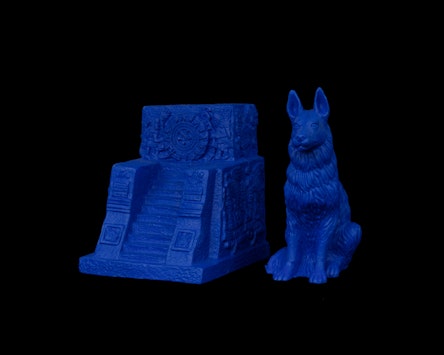
Nadín Ospina's work addresses the detection and reaffirmation of cultural fusions and interactions, the allegorical representation of symbolic encounters as a metaphor for contemporary historical events, humor as a tool for reflection, the appeal to the imagery of Pop culture with the consequent reappearance of fantastic beings and pre-Columbian references. The concepts of "the Other", "otherness", "alterity", have been fundamental topics of the studies of the social sciences in their attempt to explain the intrinsic problems of human interaction. In Ospina's work, the idea of "the other" as opposed to the concept of identity, defines the experience of the confrontation with the strange, the foreign, the different, the distant, the uncertain. "The time of pandemic and isolation, apart from the feelings of loneliness, fear, anguish and uncertainty, left us with a series of unique and surprising images of nature and the beings that make it up, which seem to have rebelled against their wild environment and to their, that, another tacitly agreed confinement with the human. The desolate cities were full of unusual presences. Foxes in London, deer in Bogotá, elephants in China, dolphins and swans in Venice. Pumas, foxes, possums, wild boars, monkeys, ducks, turkeys have been seen on the streets of various cities. With this series of images in mind and with the persistent reference to the manger or birth that has always been a visual artifact that seduces and inspires me, I create the work 'The Way of All Things'. The work is articulated with the absurd surreal confluence of dimensions and times of a Nativity in which architectures and characters from the most diverse origins coexist scenographically in a "sacred kitsch" device of eminently popular roots. The alleged human pre-eminence faltered before the forces of nature and anthropocentrism was called into question. The survival of the “dominant” species was called into question and fundamental questions about the social and political future were put on the table. Perhaps we should consider ourselves more equal, more involved with the rest of the universe and with fellow galactic travelers. The way of all things is different from the one we have arrogantly built. "

Nadín Ospina's work addresses the detection and reaffirmation of cultural fusions and interactions, the allegorical representation of symbolic encounters as a metaphor for contemporary historical events, humor as a tool for reflection, the appeal to the imagery of Pop culture with the consequent reappearance of fantastic beings and pre-Columbian references. The concepts of "the Other", "otherness", "alterity", have been fundamental topics of the studies of the social sciences in their attempt to explain the intrinsic problems of human interaction. In Ospina's work, the idea of "the other" as opposed to the concept of identity, defines the experience of the confrontation with the strange, the foreign, the different, the distant, the uncertain. "The time of pandemic and isolation, apart from the feelings of loneliness, fear, anguish and uncertainty, left us with a series of unique and surprising images of nature and the beings that make it up, which seem to have rebelled against their wild environment and to their, that, another tacitly agreed confinement with the human. The desolate cities were full of unusual presences. Foxes in London, deer in Bogotá, elephants in China, dolphins and swans in Venice. Pumas, foxes, possums, wild boars, monkeys, ducks, turkeys have been seen on the streets of various cities. With this series of images in mind and with the persistent reference to the manger or birth that has always been a visual artifact that seduces and inspires me, I create the work 'The Way of All Things'. The work is articulated with the absurd surreal confluence of dimensions and times of a Nativity in which architectures and characters from the most diverse origins coexist scenographically in a "sacred kitsch" device of eminently popular roots. The alleged human pre-eminence faltered before the forces of nature and anthropocentrism was called into question. The survival of the “dominant” species was called into question and fundamental questions about the social and political future were put on the table. Perhaps we should consider ourselves more equal, more involved with the rest of the universe and with fellow galactic travelers. The way of all things is different from the one we have arrogantly built. "
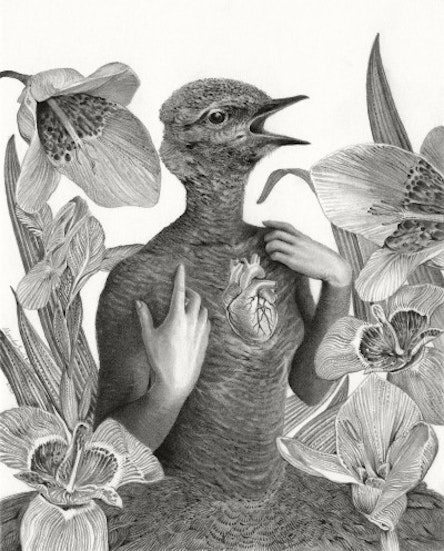
Hybridity is inherent to any of my works, and my images always tend to be a mixture of different natures. The image is more than a mere compilation of sensitive appearances, the image is above all a certain point of view, where emotions and thoughts are not contained in the objects of reality but are determined by my relationship with them. This makes the craft to play a fundamental role, since my gesture in the drawing is the direct manifestation of my emotions and thoughts. The real and the imaginary intersect in the work, turning the representation into a phenomenon where emotions and ideas are embodied, instead of a mere capture of sensory appearances. In my most recent explorations, the coexistence between the natural and the human is a theme that has been taking shape. I have always believed that nature is partially inaccessible to us. Somehow, human history begins when men distinguished themselves from animals and the links with some essential aspects of nature were broken. I am particularly interested in how humankind seeks through poetry to relate to his environment via exercises of representation and interpretation of the world, reinventing and defining through art everything he sees.

Cruz Novillo is one of the Spanish artists who, starting in the 1970s, undertook the renewal of geometric visual language in Spain. His work is influenced by mathematical, musical, geometric parameters and various color theories. In the 1990s, he developed the plastic concept “Diaphragm”, a name that encompasses a multitude of works whose common characteristic is the combination of a variable number of monochrome, sound, photographic or three-dimensional elements. In his work, geometric abstraction and figuration coexist in a natural way since both come from the patterns marked by the combination of musical notes, numbers and colors. Cruz Novillo is an Academician of the Royal Academy of Fine Arts of San Fernando. He won the National Design Award in 1997; National Prize for Painting Community of Castilla La Mancha, 2002; Medal of Merit for Fine Arts 2012. In 1977 he represented Spain at the Sao Paulo International Biennial, Brazil. His work is represented in national and international private and public collections such as the Reina Sofía National Art Center Museum (MNCARS); Patio Herreriano Museum of Valladolid, Spain; Juan March Foundation, Madrid, Spain; Accenture Collection, Madrid.